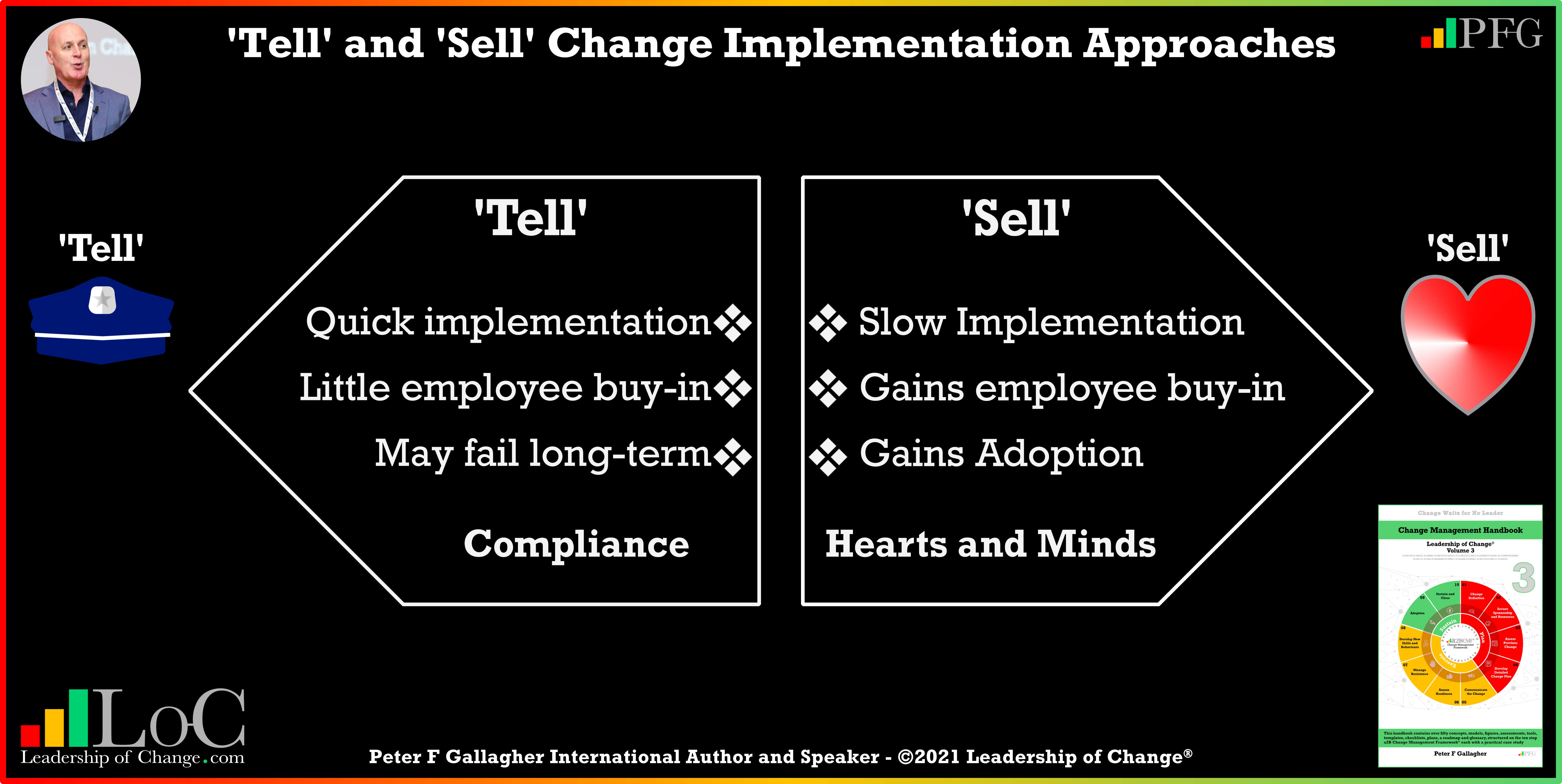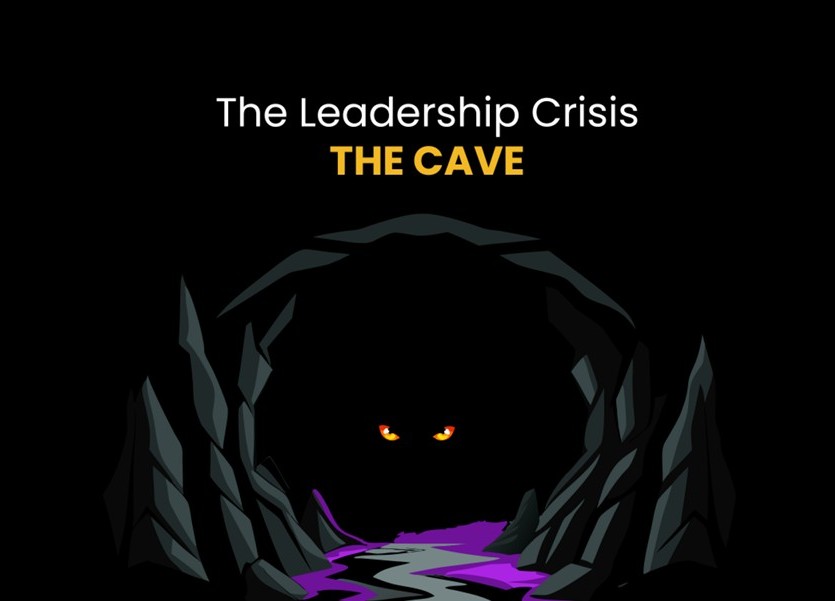
Change disruption is the order of the day. Rapidly changing customer buying habits, access to new technology, and social media accelerate the way organisations need to adapt to change to remain competitive or even survive. If done properly, change management is the proven game changer in making this possible. Change management will support the organisation, its employees and leaders to move from the current state ‘a’ to the improved state ‘B’. It can enable and enhance implementation of the new ways of working, behaviour and adoption of the change.
However, the change implementation approach depends on the type of change. If the change is about compliance, legislation or safety it will be a ‘Tell’. If it is about winning hearts and minds it will be a ‘Sell’. Both approaches have advantages and disadvantages, and both approaches will encounter some level of resistance.
Tell
Advantages: Speed is the nature of this type of change implementation. The organisation enforces the implementation decision, with consequences for those who do not obey.
Disadvantages: Changes like this are implemented quickly with no time for staff consultation. As a result, people will feel that this change is ‘done unto them’ and it will take longer to achieve buy-in and acceptance.
“Nothing negatively impacts organisation performance quicker than employees who resists change and who believes that the way they work today is the way they will work tomorrow”
Sell
Advantages: This type of change allows the organisation to communicate the change in advance, take feedback and gain staff buy-in, winning hearts and minds.
Disadvantages: The process of communicating, involving lots of people and receiving feedback, takes time. This type of change approach takes a lot longer than the ‘Tell’ approach and much more organisational effort.
“Without employee resistance, you will not achieve organisational change.”
Other Blogs by Peter F Gallagher: https://www.peterfgallagher.com/blog
By Peter F. Gallagher
Keywords: Leadership, Change Management, Business Strategy

 China Outpaces U.S. in Shipbuilding: 1,000 to 8
China Outpaces U.S. in Shipbuilding: 1,000 to 8 China Outpaces U.S. in Shipbuilding: 1,000 to 8
China Outpaces U.S. in Shipbuilding: 1,000 to 8 The Innovation Dilemma: Open-Weight Versus Proprietary Models in Knowledge Distillation
The Innovation Dilemma: Open-Weight Versus Proprietary Models in Knowledge Distillation From Caves to Corner Offices: Why Grant McGaugh’s “First Light” Breaks Every Rule of Business Literature
From Caves to Corner Offices: Why Grant McGaugh’s “First Light” Breaks Every Rule of Business Literature Why Risk Strategy Starts with Trust
Why Risk Strategy Starts with Trust